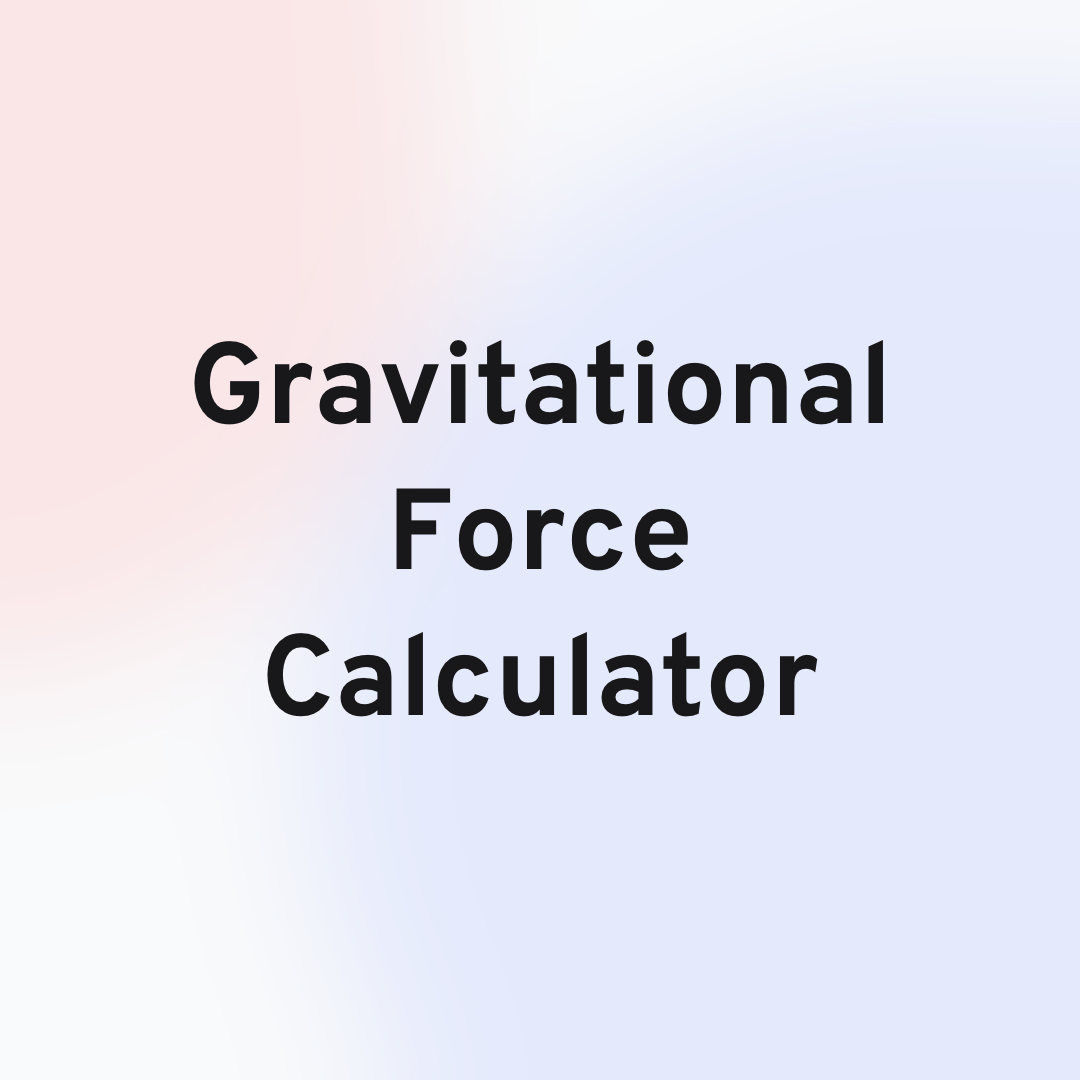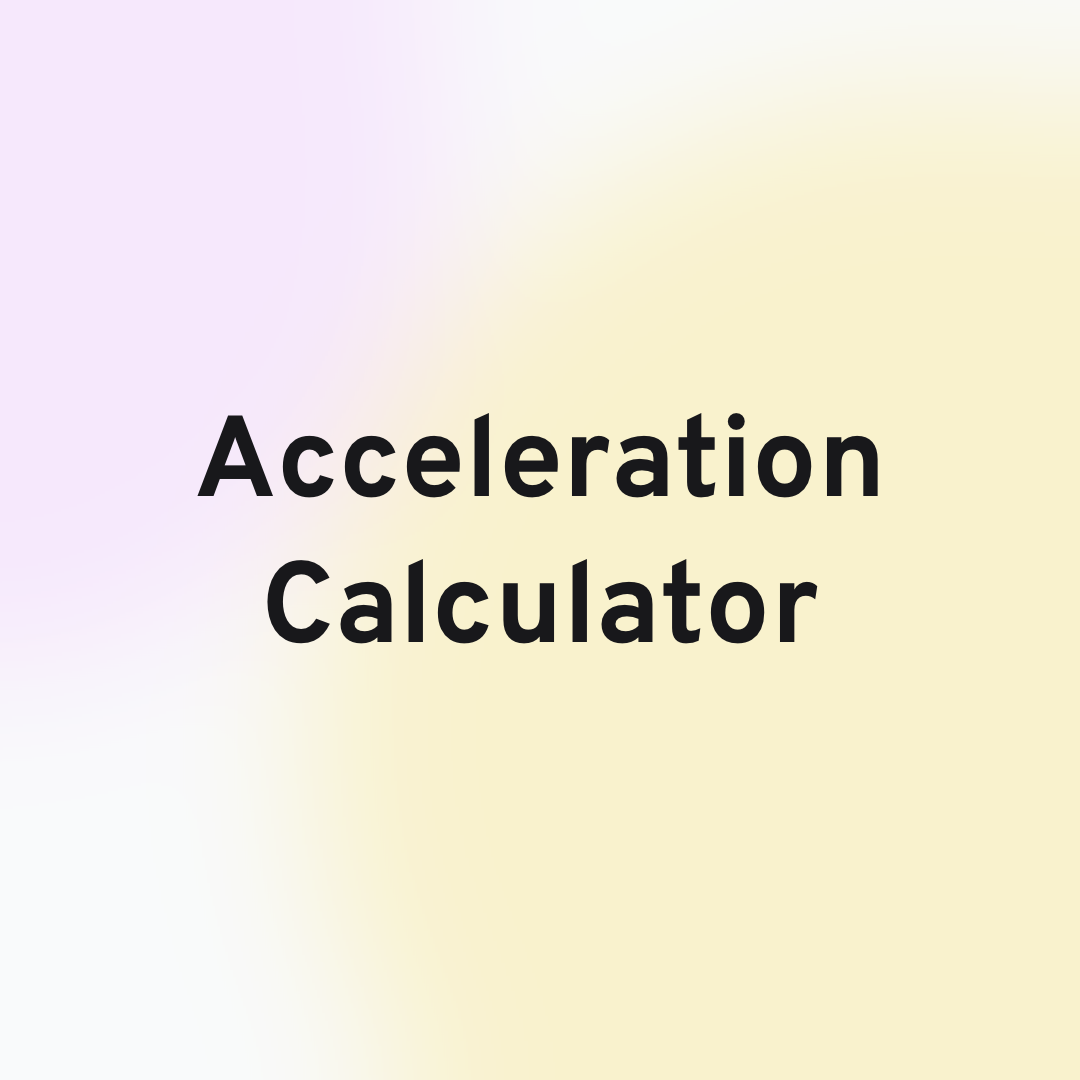
Physics
Mechanics
Velocity Calculator
Our Velocity calculator will help you calculate the object's velocity based on position and time values under constant acceleration.
Our Impulse calculator helps you calculate Impulse. We define Impulse as the change in momentum. It is a vector quantity with magnitude and direction, and its direction is the same as the net external force applied.
The SI unit of an Impulse is Newton’s Second (N s). The alternative unit for impulse is the Kilogram Meter per Second (kg m /s).
Using the impulse calculator, you can calculate the impulse by inputting mass, final velocity, and initial velocity.
Mass (m) The mass of the object
Final Velocity (v2) The Final Velocity of the object
Initial Velocity (v1) The Initial Velocity of the object
Impulse (J) The change in momentum due to the change in velocity of the object
Impulse is the product of the net external force and the time the force is applied to accelerate the particle from rest to its current velocity. It quantifies the effect of a net force acting on an object over time. We generally express it using Newton Seconds (N s).
We can also calculate impulse using velocity; We obtain the change in momentum by using the following formula
Where,
J → Impulse of the object
m → mass of the object
v2 → Final Velocity of the object
v1 → Initial Velocity of the object
The change in momentum of an object after a force is applied to accelerate given by the following equation
We obtain Acceleration by the change in velocity divided by the change in time.
We can write change in velocity as
Substituting in the above equation, we get
Force (F) given by,
Hence, we obtain the change in Momentum as
Where,
F → Force Applied
t → time for which the force is applied
The change in Momentum is the Impulse (J). We refer to this equivalence as the Impulse-Momentum theorem.
We can also calculate impulse using velocity; We obtain the change in momentum by using the following formula
Where,
J → Impulse of the object
m → mass of the object
v2 → Final Velocity of the object
v1 → Initial Velocity of the object
Impulse is the product of the force applied to an object and the time over which the force is applied. It is a measure of the change in momentum of an object and we typically measure it in units of newton-seconds (N·s).
The impulse is proportional to the constant net force acting on an item and the time period during which the net force operates since the impulse is the combination of force and time. The stronger the force exerted on an object, the stronger the impulse.
The impulse is directly related to momentum since it is the change in momentum of an object. When we subject an object to an impulse, its momentum changes.

Physics
Mechanics
Our Velocity calculator will help you calculate the object's velocity based on position and time values under constant acceleration.

Physics
Mechanics
Compute momentum easily with our intuitive Momentum Calculator. Input mass and velocity to get precise results in a jiffy.

Physics
Mechanics
Calculate free fall velocity and height. Input initial velocity, height, and time into our free fall calculator to obtain precise results.

Mathematics
Arithmetic
Effortlessly calculate percentages with our free percentage calculator! Find x percentage of y, calculate percentage changes and more!

Physics
Mechanics
Calculate the force of gravity between objects and understand the interactions between celestials using our Gravitational Force Calculator.

Physics
Mechanics
Precisely calculate acceleration with our nifty Acceleration Calculator. Input initial and final velocities, and time, to obtain the results!